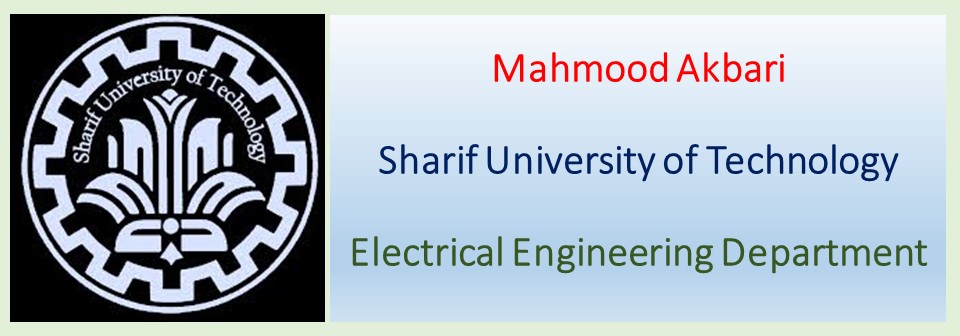


Registered Patent
Wideband substrate integrated waveguide slot antenna
SIW SLOT ANTENNA WITH METAMATERIAL SUBSTRATE
The present disclosure generally relates to radio wireless communication systems,
and particularly relates to printed slot antennas, and more particularly, to an
SIW antenna with metamaterial substrate.
BACKGROUND
- In recent years, growing attention has been paid to metamaterials with unusual permittivity and permeability due to their anomalous influence on wave propagation properties. These artificial materials have recently led not only to the interesting theoretical possibilities for microwave, infrared, and optical applications but also to several conceptual advancements in the fundamentals of electromagnetic theory. Experimental applications of metamaterial structures have been investigated in several previous works, such as waveguide miniaturization compact phase shifters and hybrid. Moreover, using double negative (DNG), e-negative (ENG), ?-negative (MNG) behavior of periodic structures allow squeezing the antenna dimensions due to their quasi-static resonant response. Recent efforts have been directed to metamaterial-based, non-foster elements in order to achieve a higher bandwidth of desired dispersion diagram.
- Among these types of metamaterials, the near-zero region in the constitutive parameter space has interesting characteristics. In particular, epsilon-near-zero (ENZ) is of the most interest because of its ability to support near infinite phase velocity and static-like field distributions over very large scales, which can be used for a variety of applications such as cloaking and radiation enhancement. Energy tunneling shows the exotic propagation properties in ENZ metamaterial channels. No one expects a waveguide with a sharp discontinuity to transmit a significant amount of energy. However, it has been shown that an ultra-thin channel filled with ENZ metamaterial can represent remarkable transmission to the other side of the waveguide. Also, it was mentioned that the waveguides in the sides of an ENZ channel can have different characteristic impedance. In other words, ENZ metamaterial helps to overcome a mismatch between different impedances and provides high transmission in this case.
- Wave squeezing through an ENZ-filled channel has enlightened many ideas to match structures with different characteristic impedance. Moreover, it showed that placing a suitable probe in an ultra-thin ENZ channel to excite the antenna may provide a substantially enhanced radiated field. This technique formerly was used for coaxial cable to waveguide matching. In other words, the ENZ layer acts as a matching segment in the structure, which effectively transforms the intrinsic antenna impedance to that of free space in antenna applications. In particular, ENZ has a substantial role in antenna applications, such as gain enhancement in shortened horn antenna and radiation pattern control of a monopole antenna sunk in an ENZ volume, which is surrounded by a dielectric flare. Moreover, a planoconcave lens is disclosed using ENZ metamaterial, which has 17.6 dB directivity while providing 34 dB polarization discrimination.
- It is well known that reducing relative permittivity of the substrate in a microstrip patch antenna causes an increase in the impedance bandwidth and radiation efficiency of the structure. This phenomenon emanates from the inverse relation of relative permittivity and the bandwidth of the antenna. According to this fact, the authors have recently suggested an ENZ-loaded patch antenna, which results in a wideband impedance response. Also, by using ENZ substrate, a wideband leaky-wave antenna is disclosed that provides perfect beam orientation and eliminates beam squint in wideband frequency scanning.
- One of the common planar antennas used for compact, integrated systems is a slot antenna, which is able to provide low-profile and low-cost solutions. Using substrate integrated waveguide (SIW) technology provides the advantage of the low profile planar structure along with reduced unwanted radiation from the waveguide walls compared to a microstrip slot antenna.
- In addition, an SIW structure is compatible with printed circuits, which makes it easy to integrate with microstrip-based devices and components. Thus, a great tendency is to a slot antenna array on SIW, particularly in mm-waveband to provide sufficient gain along with low production cost. However, the antenna efficiency and bandwidth are limited due to resonance characteristics of the slot antenna. Many efforts have been directed to enhance slot bandwidth.
- The idea of using multiple slots with close resonance frequencies is a common technique which result in 8.5% and 16.6% fractional bandwidth, respectively. Although it improves bandwidth, this technique requires many longitudinal slots, which increases the antenna size. A similar approach is to simultaneously excite two hybrid modes in an SIW cavity which provides 6.3% bandwidth. Also a multi-mode resonance SIW cavity is utilized along with a complementary split ring resonator that provides 16.67% bandwidth. The inherit multimode resonance of the split ring resonator along with SIW cavity resonance provides such high bandwidth in expense of increasing cross polarization in the H-plane, specifically at higher frequencies.
- There is, therefore, a need in the art for methods to increase the bandwidth of a transverse slot antenna by using ENZ MTM beneath the radiating slot and decrease its impedance fluctuation though the frequency bandwidth.
Inventor:
- Mohammad Hossein Mazaheri Kalahrudi
- Amir Jafargholi
- Jalaledin Tayebpour
- Alireza Jahanbakhshi
- Mahmood Akbari
Current Assignee: Amirkabir University Of Technology
Worldwide applications: 2019 WO US
Application: US16/280,742 events
2018-02-21 Priority to US201862633082P
2019-02-20 Application led by Amirkabir University Of Technology
2019-02-20 Priority to US16/280,742
2019-06-13 Publication of US20190181559A1
2019-12-03 Application status is Pending
Info: Patent citations (1)
Legal events, Similar documents, Priority and Related Applications
External links: USPTO, USPTO Assignment, Espacenet, Global Dossier
Discuss Claims (14) Hide Dependent
Worldwide applications: 2019 WO US
Application: US16/280,742 events
2018-02-21 Priority to US201862633082P
2019-02-20 Application led by Amirkabir University Of Technology
2019-02-20 Priority to US16/280,742
2019-06-13 Publication of US20190181559A1
2019-12-03 Application status is Pending
Info: Patent citations (1)
Legal events, Similar documents, Priority and Related Applications
External links: USPTO, USPTO Assignment, Espacenet, Global Dossier
Discuss Claims (14) Hide Dependent